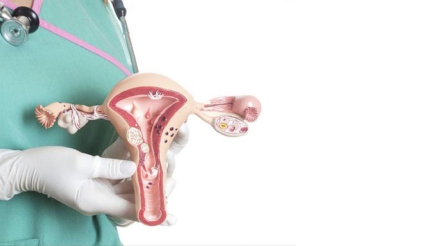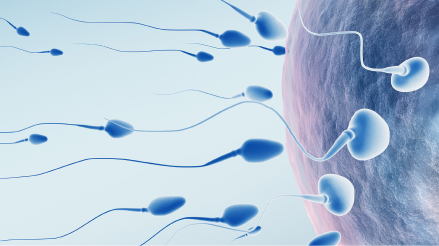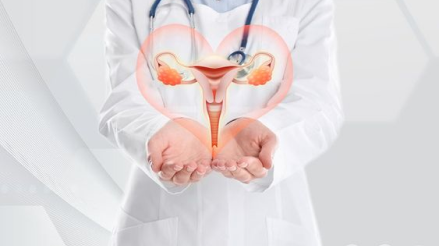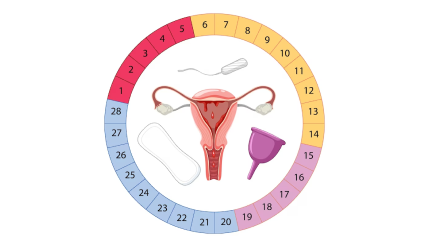You may also like…
Painful Sex : What & Why ?
Hey there, curious minds! Let's dive into the intriguing world of dyspareunia, a term that refers to difficulties and pain during intercourse. But fear not, because we're about to unravel the different causes of this phenomenon in a simple way.
For the Male Partner...
Now, when it comes to the male partner, there are a few interesting factors that can contribute to dyspareunia.
Gross congenital abnormality of the penis
Gross congenital abnormality of the penis, like a unique shape or structure that makes things a bit more challenging.
Impotence
Impotence- is usually partial and not a complete roadblock. Imagine a situation where maintaining an erection becomes a bit of a challenge. It's like a rollercoaster ride that starts off strong but needs a little extra push to keep going.
Premature ejaculation
Premature ejaculation! It's like a race against time, where the finish line is reached a little sooner than expected. But fear not, because with a bit of practice and knowledge, the timing can be perfected. It's all about finding the right rhythm and pace.
Ignorance in the technique of coitus
Ignorance in the technique of coitus. It's like stumbling upon a hidden treasure chest of knowledge and realizing that there's so much more to learn. But fret not, because with a little guidance and exploration, you'll discover the secrets of a satisfying and pleasurable experience.
So, there you have it, a glimpse into the fascinating causes of dyspareunia related to the male partner. Remember, each challenge can be overcome with patience, communication, and a dash of creativity.
For the Female Partner ...
Hey there, aspiring moms-to-be! Painful sex can be caused by a lot of medical concerns but fret not, because we're about to break it down into simple terms that you can easily understand.
Painful lesions
First up, we have painful lesions in the region of the introitus, which is the opening of the vagina. Imagine experiencing discomfort due to conditions like vulvitis (acute and chronic), urethral carbuncle, or Bartholin's cyst or abscess. It's like having a pesky bump or sore spot that causes pain during intimacy. In some cases, scars from previous obstetric trauma or operations can also contribute to the discomfort.
Obstructive lesions
Next, we have obstructive conditions at the vaginal introitus. Picture a situation where the entrance to the vagina faces certain challenges. This can include a rigid or imperforate hymen, which is a thin tissue that partially or completely covers the opening. Painful carunculae myrtiformes, small remnants of the hymen, can also cause spasm and discomfort. Other causes include narrow introitus due to congenital hypoplasia (underdevelopment), kraurosis (thinning of vaginal tissues), or lichen sclerosis (a condition causing itching and discomfort, especially in menopausal women). Traumatic stenosis (vaginal opening narrowed/constricted), often due to scarring from obstetric injuries or surgical procedures, can also lead to pain during intercourse.
Obstructive conditions
Moving on, we have obstructive conditions around the vaginal introitus. Imagine encountering challenges due to structural abnormalities or scarring. Congenital stenosis, where the vagina is narrower than usual, or maldevelopments can cause difficulties. Acquired stenosis can result from surgical operations like vaginal hysterectomy, prolapse repairs, or radiation therapy, which can lead to narrowing and shortening of the vagina. Sometimes, scarring from previous surgeries can create a thick septum, restricting penetration. Although rare, benign and malignant tumors of the vagina can also cause obstruction. Additionally, a dry vagina in menopausal women can contribute to discomfort.
Uterine conditions that may cause pain
Now, let's talk about uterine conditions that may not be obstructive but can cause pain during intercourse. Conditions like cervicitis, which is inflammation of the cervix, can be associated with parametritis (inflammation of tissues around the cervix), resulting in discomfort. Deep dyspareunia, or pain during deep penetration, can be caused by chronic parametritis, parametrial scars, adenomyosis (a condition where the uterine lining grows into the muscle wall), or a fixed retroverted uterus associated with chronic pelvic inflammatory disease (PID).
Lesions of the uterine appendages, such as prolapsed ovaries or acute/chronic salpingo-oophoritis (inflammation of the fallopian tubes and ovaries), can also contribute to pain during intercourse. Endometriosis, a condition where uterine tissue grows outside the uterus, can affect areas like the pouch of Douglas, rectovaginal septum, and uterosacral ligaments, causing discomfort.
Extra-genital lesions
Lastly, extragenital lesions in the bowel or bladder, such as diverticulitis of the sigmoid colon or cystitis (bladder inflammation), can also impact your comfort during intimacy.
Remember, each individual's experience is unique. If you're experiencing pain during intercourse and trying to conceive, it's essential to consult with your healthcare provider for a proper diagnosis and personalized guidance. They can help address any underlying conditions and provide appropriate treatment options.
So, stay informed, communicate openly with your healthcare provider, and keep exploring the wonderful world of fertility. May your journey be filled with understanding, support, and ultimately, the joy of conceiving your little bundle of joy!
Powered by Froala Editor







